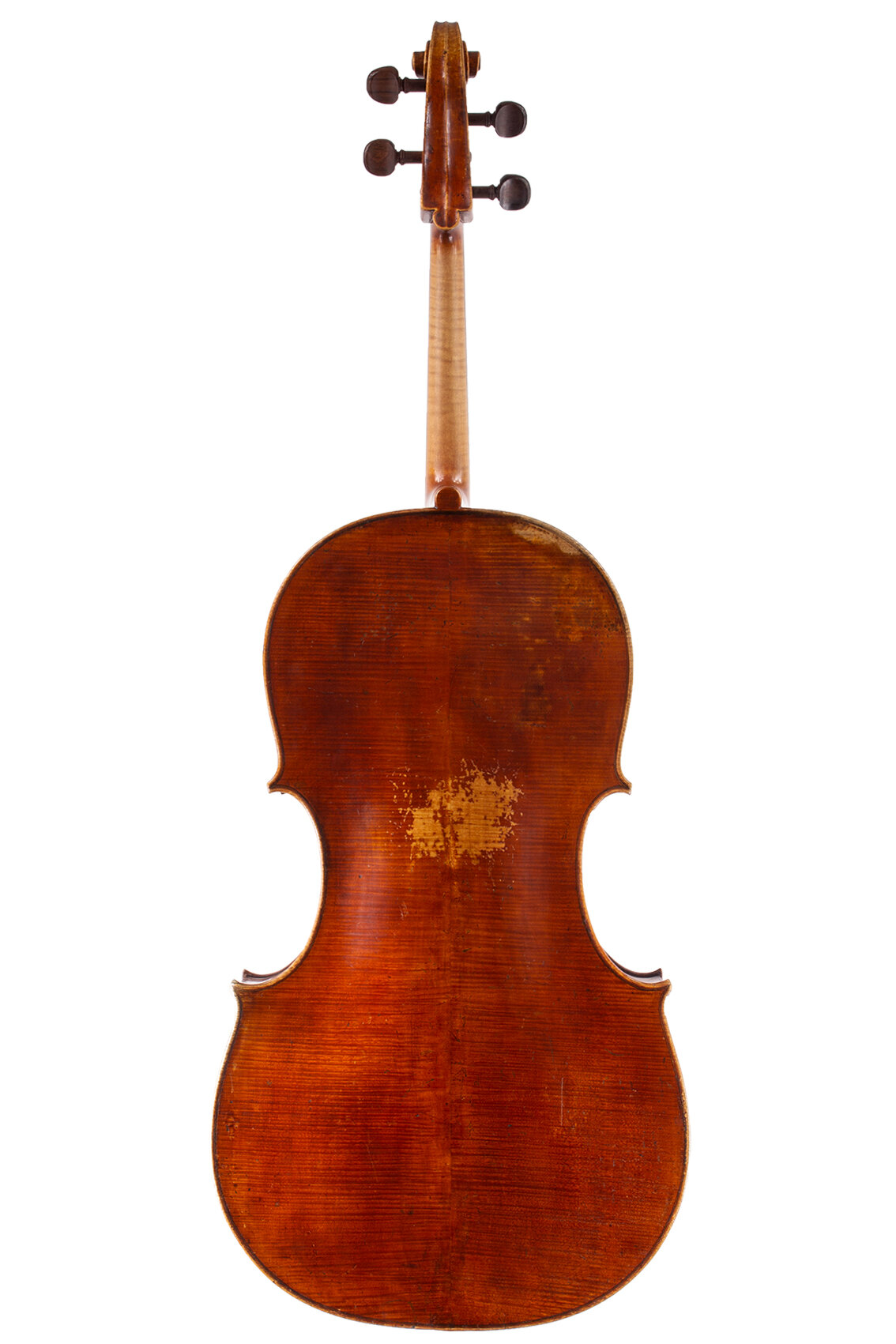Cello by William Forster, London circa 1775
Born in Cumbria, Forster established his own workshop in London around 1760. He subsequently received the Royal Warrant from the Prince of Wales and was contracted with Haydn to publish his works in England.
Forster’s cellos are sought-after, many of which were made on a distinctive shortened Amati model, and supplied to many soloists of the time.
Very resonant, bright sound and even projection across the range - registers compliment each other very well.
LABEL:
William Forster / Violin, Violoncello, Tenor and Bow Maker / Prince of Wales and the Duke of Cumberland / London
MEASUREMENTS:
Back length 735mm / Upper bout 333mm / Lower Bout 437mm / String length 690mm
FURTHER DETAILS:
Sold with a certificate by John Dilworth (2018)
‘This cello is in my opinion the work of William Foster Snr, made in London c.1775. It bears his original label, although the date is obscured. The back is of two matched pieces of quarter-sawn maple showing a consistent deeply marked narrow horizontal flame. The ribs are of irregularly flamed maple cut slightly off the quarter, and the scroll is plain. The front is of two matched pieces of straight-grained spruce with fine growth at the centre becoming slightly broader at the flanks. The varnish is of a rich red-brown colour, and the instrument, in general, is a very characteristic and well-preserved example of the maker's work."
Born in Cumbria, Forster established his own workshop in London around 1760. He subsequently received the Royal Warrant from the Prince of Wales and was contracted with Haydn to publish his works in England.
Forster’s cellos are sought-after, many of which were made on a distinctive shortened Amati model, and supplied to many soloists of the time.
Very resonant, bright sound and even projection across the range - registers compliment each other very well.
LABEL:
William Forster / Violin, Violoncello, Tenor and Bow Maker / Prince of Wales and the Duke of Cumberland / London
MEASUREMENTS:
Back length 735mm / Upper bout 333mm / Lower Bout 437mm / String length 690mm
FURTHER DETAILS:
Sold with a certificate by John Dilworth (2018)
‘This cello is in my opinion the work of William Foster Snr, made in London c.1775. It bears his original label, although the date is obscured. The back is of two matched pieces of quarter-sawn maple showing a consistent deeply marked narrow horizontal flame. The ribs are of irregularly flamed maple cut slightly off the quarter, and the scroll is plain. The front is of two matched pieces of straight-grained spruce with fine growth at the centre becoming slightly broader at the flanks. The varnish is of a rich red-brown colour, and the instrument, in general, is a very characteristic and well-preserved example of the maker's work."
Born in Cumbria, Forster established his own workshop in London around 1760. He subsequently received the Royal Warrant from the Prince of Wales and was contracted with Haydn to publish his works in England.
Forster’s cellos are sought-after, many of which were made on a distinctive shortened Amati model, and supplied to many soloists of the time.
Very resonant, bright sound and even projection across the range - registers compliment each other very well.
LABEL:
William Forster / Violin, Violoncello, Tenor and Bow Maker / Prince of Wales and the Duke of Cumberland / London
MEASUREMENTS:
Back length 735mm / Upper bout 333mm / Lower Bout 437mm / String length 690mm
FURTHER DETAILS:
Sold with a certificate by John Dilworth (2018)
‘This cello is in my opinion the work of William Foster Snr, made in London c.1775. It bears his original label, although the date is obscured. The back is of two matched pieces of quarter-sawn maple showing a consistent deeply marked narrow horizontal flame. The ribs are of irregularly flamed maple cut slightly off the quarter, and the scroll is plain. The front is of two matched pieces of straight-grained spruce with fine growth at the centre becoming slightly broader at the flanks. The varnish is of a rich red-brown colour, and the instrument, in general, is a very characteristic and well-preserved example of the maker's work."






